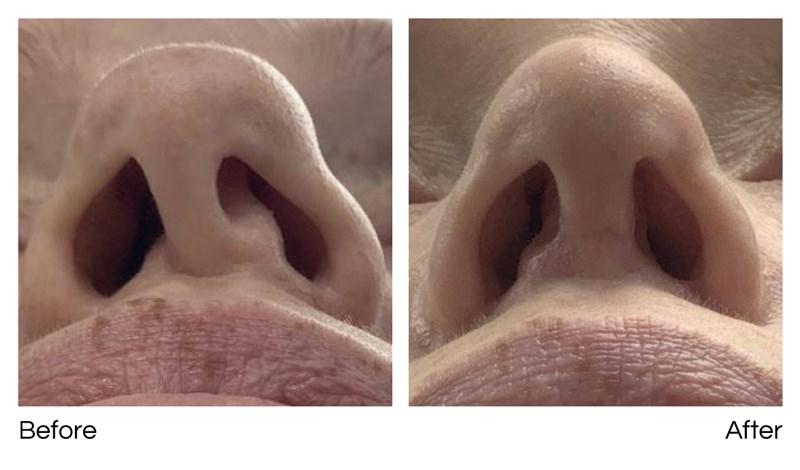Septoplasty
Septoplasty is designed to correct deviations in the nasal septum. Ideal for those struggling with breathing complications or recurrent nose issues, this procedure is often done in combination with an aesthetically focused Rhinoplasty.
Procedure Time |
2.5 Hours |
Anaesthesia |
General |
Overnight Stay |
None |
Time Off Work |
2 Weeks |
Gym |
No Gym 6 Weeks |
Full Recovery |
3 Months |

Rhinoplasty vs Septoplasty
While rhinoplasty is widely recognised for its role in reshaping the nose's external appearance, Septoplasty addresses the internal structure, specifically the nasal septum, to enhance airflow and rectify breathing difficulties. As an essential procedure within the realm of nasal surgeries, septoplasty not only offers relief from obstructed breathing but can also be combined with rhinoplasty, leading to a comprehensive approach known as septorhinoplasty.
Who Is A Septoplasty For?
The ideal candidate for septoplasty is someone who is experiencing breathing difficulties or other symptoms due to a deviated or misaligned nasal septum. The nasal septum is the thin wall between your nasal passages, and when it's deviated, it can block one or both sides of your nose.
Book a Rhinoplasty consultation
What Issues Can Septoplasty Address?
Breathing Difficulties: One of the primary reasons individuals opt for septoplasty is to alleviate breathing problems. Difficulty in breathing through one or both nostrils, especially when other treatments (like nasal sprays) prove ineffective, might signal the need for surgical intervention.
History of Nasal Injury: Those who've had nasal traumas – such as from sports injuries, accidents, or even certain childhood incidents – may develop a deviated septum as a consequence. They might benefit from septoplasty.
Recurrent Nosebleeds: A misaligned septum can increase the likelihood of nosebleeds. Individuals who experience frequent nosebleeds due to a deviated septum might be candidates.
Chronic Sinusitis: Persistent sinus infections or inflammation, which are sometimes exacerbated by a deviated septum, might indicate the need for septoplasty.
Physical Examination Findings: A thorough examination by an ENT specialist can reveal structural abnormalities in the nasal septum. This examination typically involves the use of a bright light and a nasal speculum to spread open the nostrils.
Sleep Disturbances: Some individuals with a deviated septum may experience snoring or symptoms of sleep apnea. Addressing the septal deviation can, in some cases, alleviate these symptoms.
Absence of Medical Contradictions: Ideal candidates should be in good general health and free from conditions that could complicate surgery or anesthesia. This includes uncontrolled high blood pressure, certain heart conditions, or other severe systemic diseases.
Realistic Expectations: It's crucial for candidates to understand that septoplasty primarily addresses functional issues (like breathing) rather than aesthetic concerns. If cosmetic changes are also desired, a combined procedure, septorhinoplasty, might be more appropriate.
Matured Nasal Growth: Typically, surgeons recommend waiting until the nose has stopped growing before performing a septoplasty. This usually means waiting until after the teenage years.
No Active Nasal Infections: Any current nasal or sinus infections should be completely treated and resolved before undergoing septoplasty.

